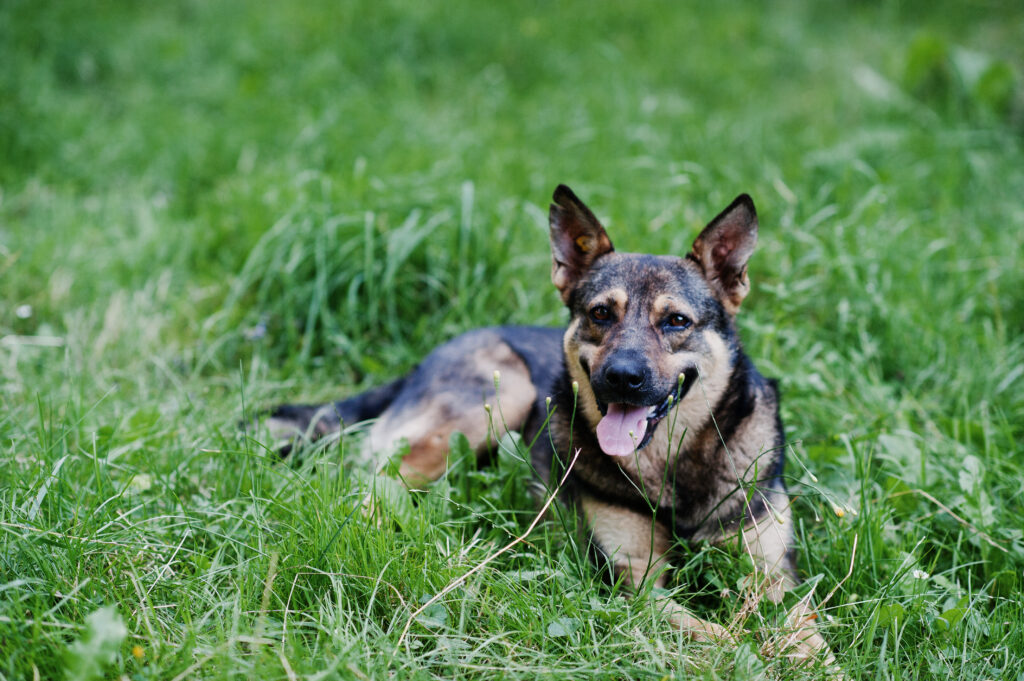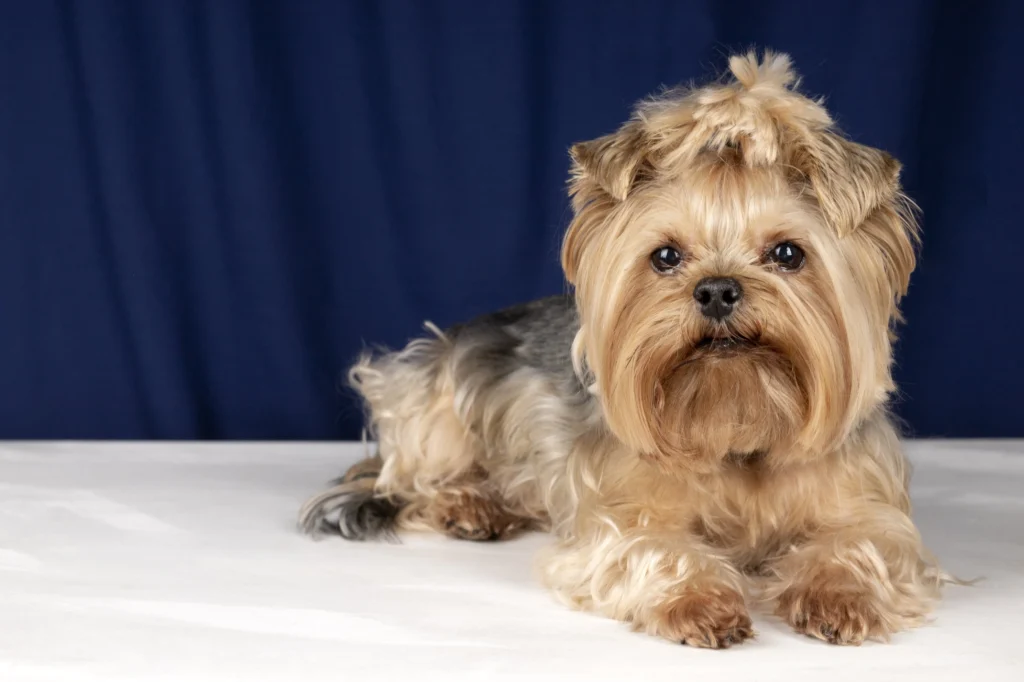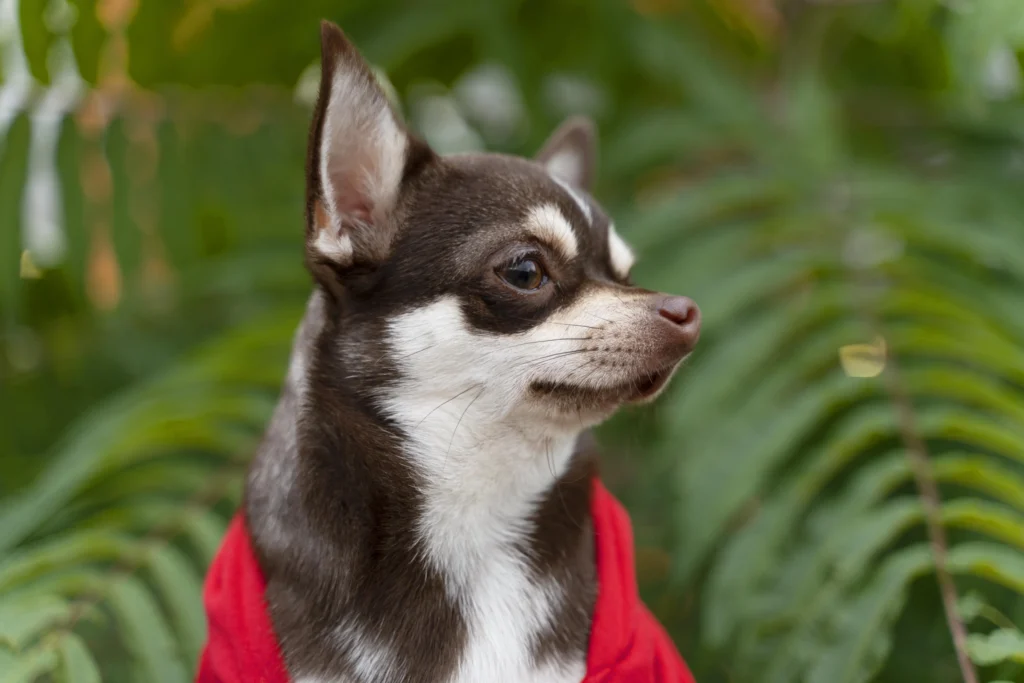1. What is the German Shepherd Dog?
The German Shepherd Dog is a large, athletic herding breed built for work, learning, and endurance. It originated in Germany in the late 1800s and belongs to the Herding Group. Typical roles include herding, protection, detection, search and rescue, service, and sport. Among large breed dogs, males stand 24–26 inches and weigh 65–90 lb; females stand 22–24 inches and weigh 50–70 lb. The double coat sheds year-round with two heavy seasonal blows. In population studies, lifespan averages about 10–12 years; females live longer than males (≈11.1 vs 9.7). As one of the signature dog breeds from Germany, the GSD is versatile worldwide. It is not usually listed among the costliest dog breeds, but lifetime costs rise with food, training, grooming, and orthopedic care.
Breed Overview
- Origin: Germany, late 1800s.
- Group: Herding. Roles: herding, protection, detection, SAR, service, sport.
- Size: males 24–26 in & 65–90 lb; females 22–24 in & 50–70 lb.
- Coat: double; heavy shed with two seasonal “blows.”
- Lifespan in large cohorts centers around ~10–12 years; females often outlive males (≈ 11.1 vs 9.7).
2. German shepherd temperament
Well-bred, socialized GSDs are confident, highly trainable, and task-driven. They show handler focus, environmental curiosity, and calm vigilance. With family they are affectionate and attentive. With strangers they are reserved, not fearful. Poor selection or low socialization increases reactivity. (Temperament aims align with the breed’s working purpose.)
Are German Shepherds good with kids?
Yes, when socialized and supervised. Teach children calm handling. Manage arousal. Redirect herding nips into games. Never leave young kids and dogs unsupervised.
3. German shepherd care
Plan 1–2 hours of physical exercise and 15–30 minutes of brain work each day. Split into walks, training, fetch/tug, and sniff work. Rotate puzzles, scent games, and simple tracking lines.
What training routine works?
Train in short, fast-reward sessions and raise criteria slowly. Session length 3–7 minutes, 2–4×/day. Teach loose-leash walking, recall, place/settle, and impulse control. Generalize cues in new locations weekly.
What grooming cadence controls shedding?
Brush 2–4× weekly; brush daily during seasonal coat blows. Use an undercoat rake and slicker. Bathe every 6–8 weeks; dry to skin. Nails 2–4 weeks. Teeth daily or ≥3–4×/week with VOHC-accepted products.
What should you feed day to day?
Feed an AAFCO complete diet and portion by body condition. Starting calories: males ~1,400–2,200 kcal/day; females ~1,100–1,800 kcal/day; adjust ±10% every 2 weeks. Meals: 2/day (puppies 3–4/day). Treats ≤ 10% of calories.
What home setup helps?
Add traction, structure, and safe containment. Use runners on slick floors, a sized crate or pen, and a raised cot for “place.” Use a Y-front harness, 5–6 ft leash, and a 20–30 ft long line for recalls. Keep ID: microchip + visible tag.
4. German shepherd mixes
What changes when the GSD is crossed?
Mixes blend GSD drive with another breed’s size, coat, and behaviors, so variance is high. Common crosses: GSD × Husky, Malinois, Labrador, Golden, Poodle. Expect differences in shedding, energy, and trainability. Meet both parents. Train and groom to the higher-demand side.
5. How do you choose a responsible breeder in the USA?
Select health-testing, contract-based breeders aligned with the parent club. Ask for OFA hips, OFA elbows, and published results; many breeders add DM DNA and temperament testing (CHIC/GSDCA frameworks). Prefer titled parents (work or sport). Require a return clause. Avoid brokers and “no-questions-asked” sales.
6. German shepherd rescue
How does adoption typically work?
Match energy to your lifestyle, then plan decompression. Process: application → interview → meet-and-greet → home check → adoption. Prepare crate, gates, routine, and a vet intake within 7 days. Use the 3–3–3 guideline: ~3 days to decompress, ~3 weeks to learn routine, ~3 months to feel at home.
7. Which diseases are most relevant to the breed?
Key risks include hip dysplasia, elbow dysplasia, degenerative myelopathy (DM), exocrine pancreatic insufficiency (EPI), allergic skin/ear disease, pannus. They have also increased risk of gastric dilatation–volvulus (GDV) because they belong to deep chested dog breeds.
- Hip/Elbow dysplasia: developmental joint disease; screening with OFA or PennHIP guides breeding; arthritis risk rises with age and excess weight
- Degenerative myelopathy: SOD1-associated; onset often 8–14 years; progressive hind-end weakness and ataxia; DNA testing informs breeding.
- Exocrine pancreatic insufficiency (EPI): weight loss with ravenous appetite; large, pale stools; confirm by TLI; lifelong pancreatic enzymes and cobalamin support are effective.
- Allergies/otitis externa: recurrent itch and ear infections; manage early to prevent chronic change.
- Pannus (chronic superficial keratitis): immune-mediated corneal disease; UV exposure worsens; ophthalmic meds are long-term.
How do you reduce the risk of bloat/GDV?
Feed smaller, more frequent meals, slow fast eaters, rest 1 hour before/after meals, and discuss prophylactic gastropexy. Risk rises with deep-chested conformation, age, family history, fast eating, and raised bowls in large/giant breeds. Targeted diet factors (e.g., certain fat placements and acids in early-2000s data) also showed associations. Know emergency signs: distended belly, unproductive retching, restlessness, collapse → ER now.
What preventive schedule works?
Book annual wellness exams; switch to twice-yearly at seniors (~7+). Keep vaccines and parasite control current. Maintain lean weight. Schedule dental cleanings as advised. Log weights, meds, and notable signs.
8. German shepherd puppy
What is the correct early-life plan?
Use a simple loop and stack socialization during the sensitive window. Loop: sleep → toilet → train/play → rest. Socialize to 20–30 new sights/sounds/handling experiences weekly (8–16 weeks). Run 3–5 minute micro-sessions 3–5×/day with high-value rewards. Handle paws/ears/mouth daily. Protect joints; avoid forced stairs and repetitive jumps.
What should puppies eat and how often?
Feed a large-breed puppy diet with controlled calcium:phosphorus in 3–4 meals/day. Grow steady, not fast. Keep body condition lean. Transition to adult food 12–18 months, per your veterinarian.
Compact checklists
Daily plan

- Exercise 1–2 h/day + brain work 15–30 min
- Train 3–7 min, 2–4×/day; proof cues weekly
- Feed AAFCO-complete; keep body lean
- Brush 2–4×/wk (daily in coat blows); nails 2–4 wks; teeth daily
Breeder request set
- OFA hips, OFA elbows, DM DNA (CHIC/GSDCA documented)
- Temperament test and working/sport titles
- Contract with return clause; facility tour or live video
Emergency red flags
- GDV: distended belly + dry heaves → ER now
- Rapid weight loss with pale stools (possible EPI)
- Sudden hind-end weakness/ataxia (possible DM)
- Non-weight-bearing lameness; severe ear or eye pain
FAQS of German Shepherd
When do German Shepherds stop growing?
Most German Shepherds reach adult height by 12 months and fill out by 18–24 months. Large males mature slower. Feed large-breed puppy diets, keep weight lean, and avoid repetitive high-impact exercise during growth to protect hips, elbows, spine health.
Do German Shepherds like water?
Many German Shepherds enjoy water once introduced gradually and safely. Start with shallow entries, toss floating toys, and praise calm exploration. Rinse after chlorinated or salty swims. Dry ears and coat. Avoid strong currents, cold, or access to pools alone.
Do German Shepherds shed a lot?
Yes—heavily. The double coat sheds all year and “blows” seasonally. Expect loose undercoat on furniture and clothing. Brush daily during blows, otherwise several times weekly. Use an undercoat rake, slicker, and vacuum. Consider omega-3s with veterinarian’s guidance for skin health.
How much does a German Shepherd puppy cost?
Well-bred German Shepherd puppies often cost $2,000–$4,000, depending on pedigree, titles, health testing, and region. Deposits are common. Budget for supplies, training, vaccines, microchip, and insurance. Adoption through rescue is cheaper and typically includes up-to-date vetting plus spay or neuter.
Why do German Shepherds whine?
German Shepherds whine to communicate needs or stress. Common triggers include pain, anxiety, frustration, boredom, or anticipation during training. Rule out medical causes first. Increase exercise, enrichment, and routines. Reward quiet moments. Seek behavior help if whining escalates or persists.
Can you shave a German Shepherd?
No. Shaving damages the double coat, reduces insulation, and can worsen heat stress and sunburn. The undercoat sheds naturally and regulates temperature. Instead, brush frequently, bathe as needed, blow-dry during coat blows, and manage heat with shade, hydration, and rest.
Do German Shepherds bark a lot?
German Shepherds are vocal watchdogs and may bark without training and outlets. Provide exercise, enrichment, and routines. Teach a quiet cue and reward silence. Manage triggers with distance and window film. Rule out anxiety or pain if barking increases suddenly.
How much do German Shepherds shed?
German Shepherds shed heavily year-round. Expect hair on floors, clothes, and car interiors. Seasonal coat blows release dense undercoat. Brush several times weekly, daily during blows. Use undercoat rake, slicker, and vacuum. Professional de-shed grooms help; shaving harms coat function.
How many puppies can a German Shepherd have?
German Shepherd litters average six to eight puppies, with normal ranges from one to ten. First litters and older dams skew smaller. Genetics, health, and nutrition influence size. Responsible breeders confirm pregnancy by ultrasound and provide round-the-clock neonatal care support.


